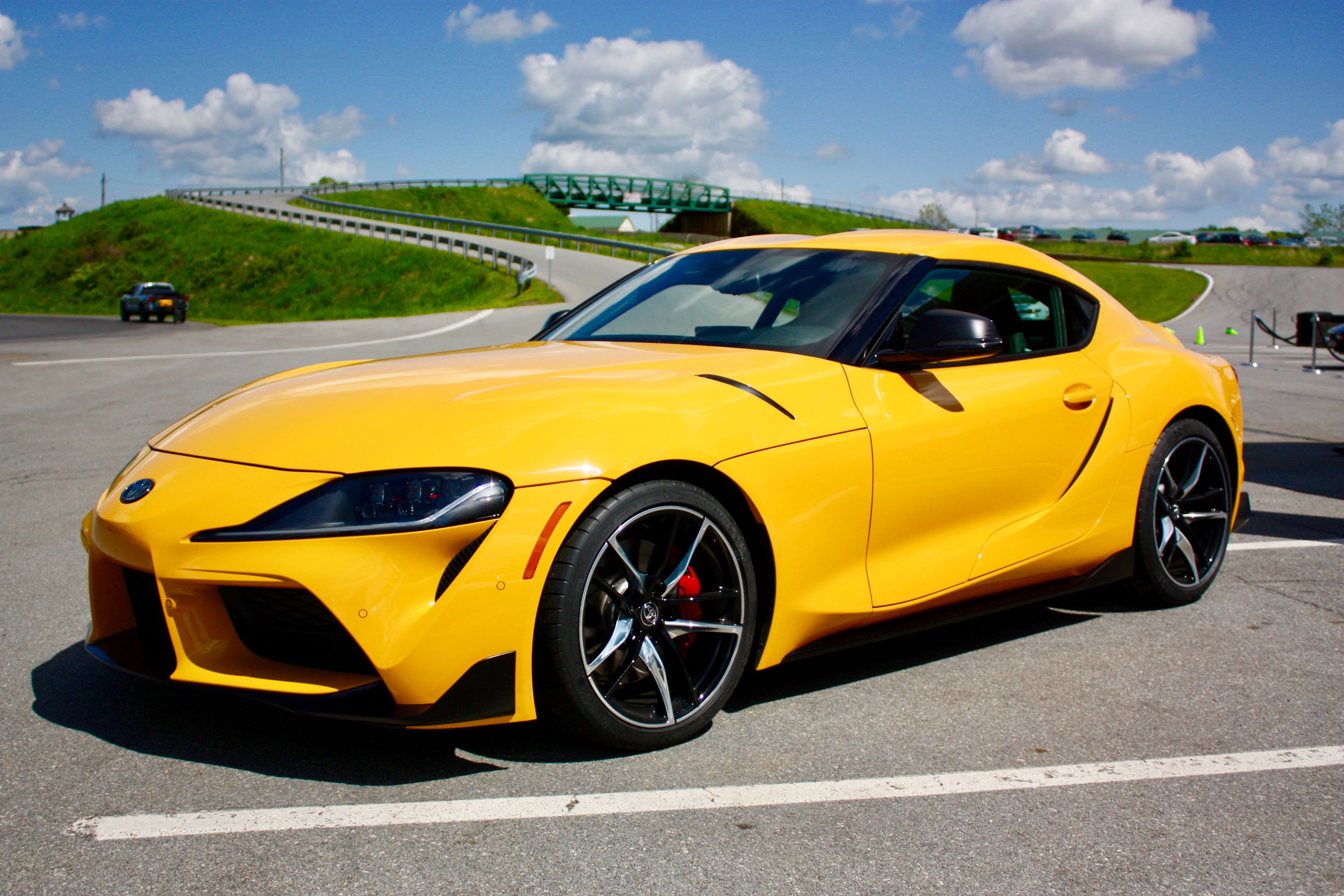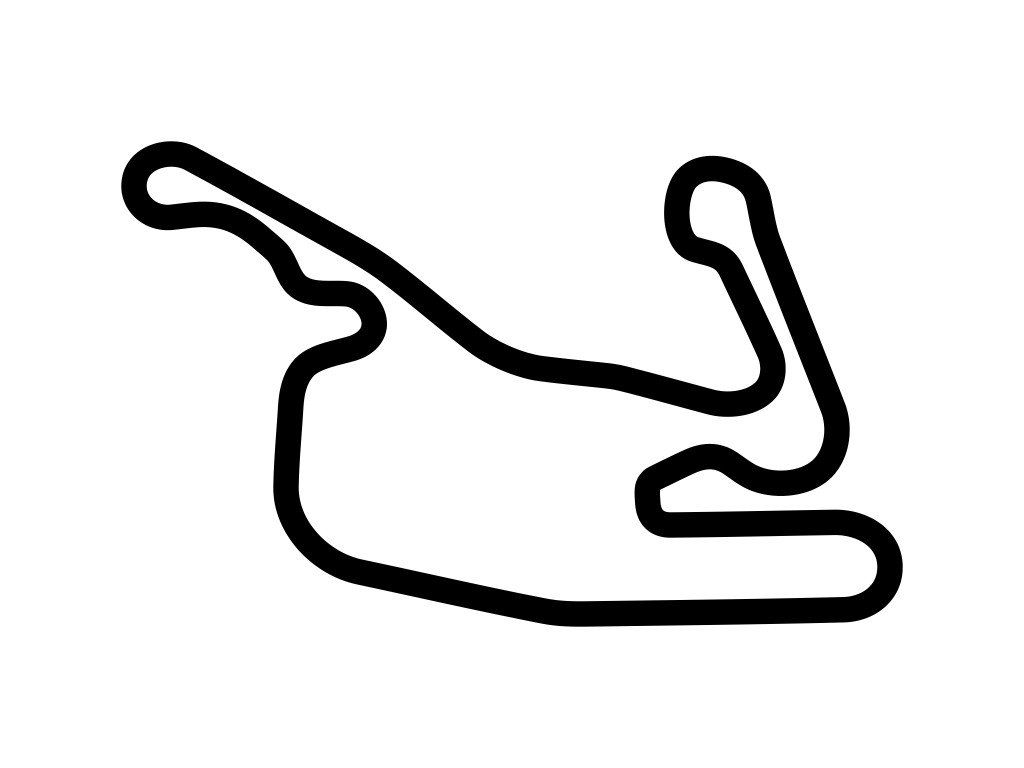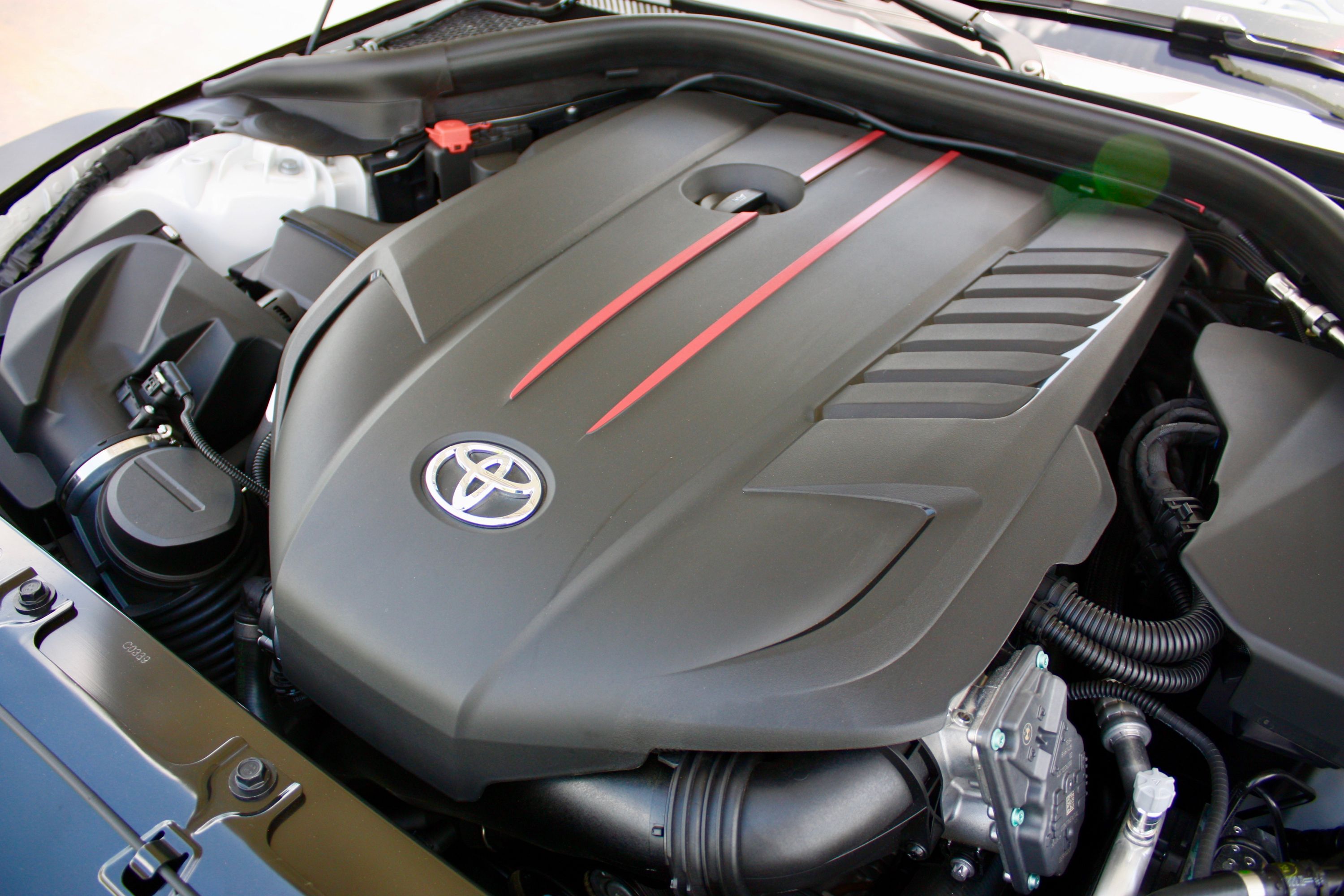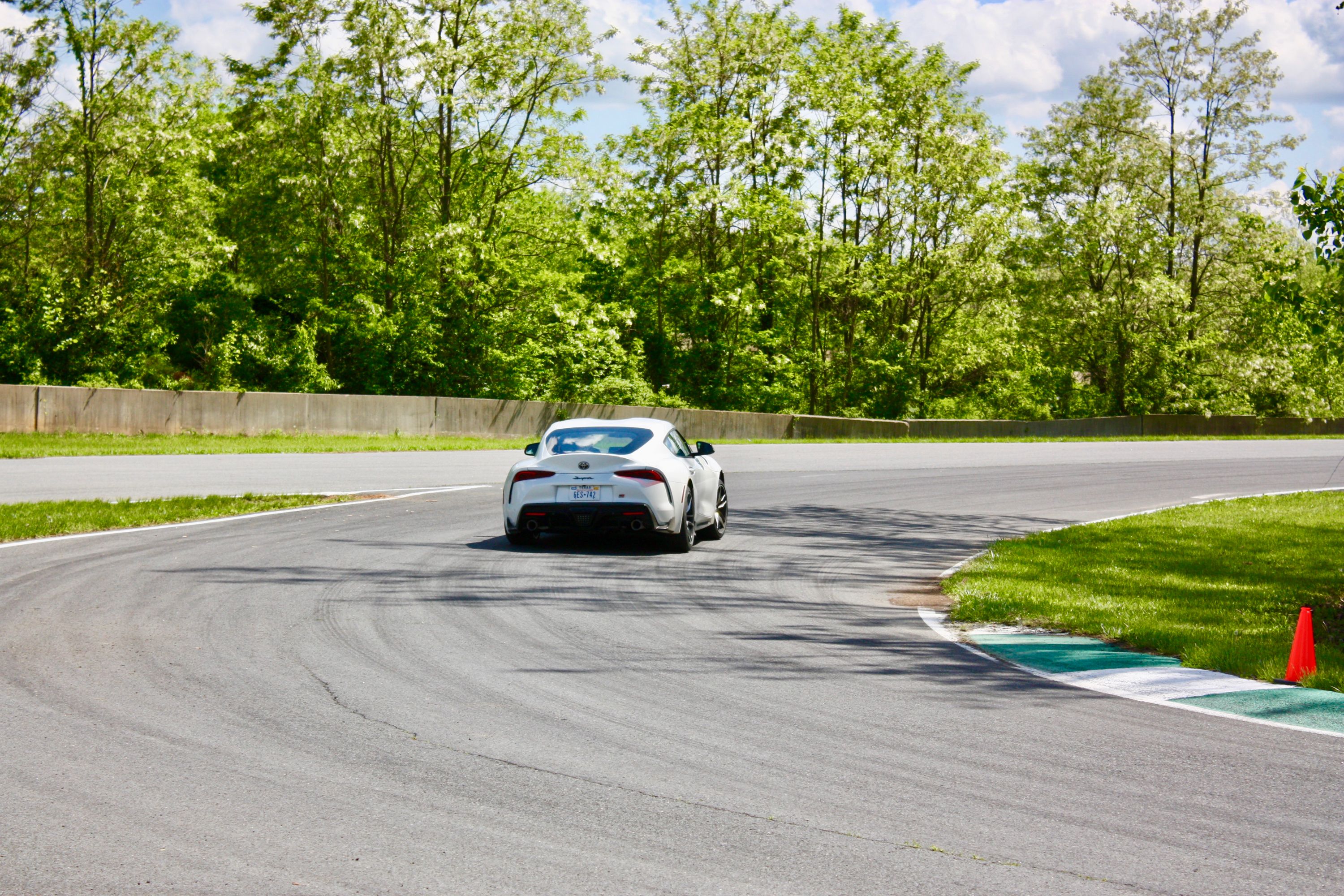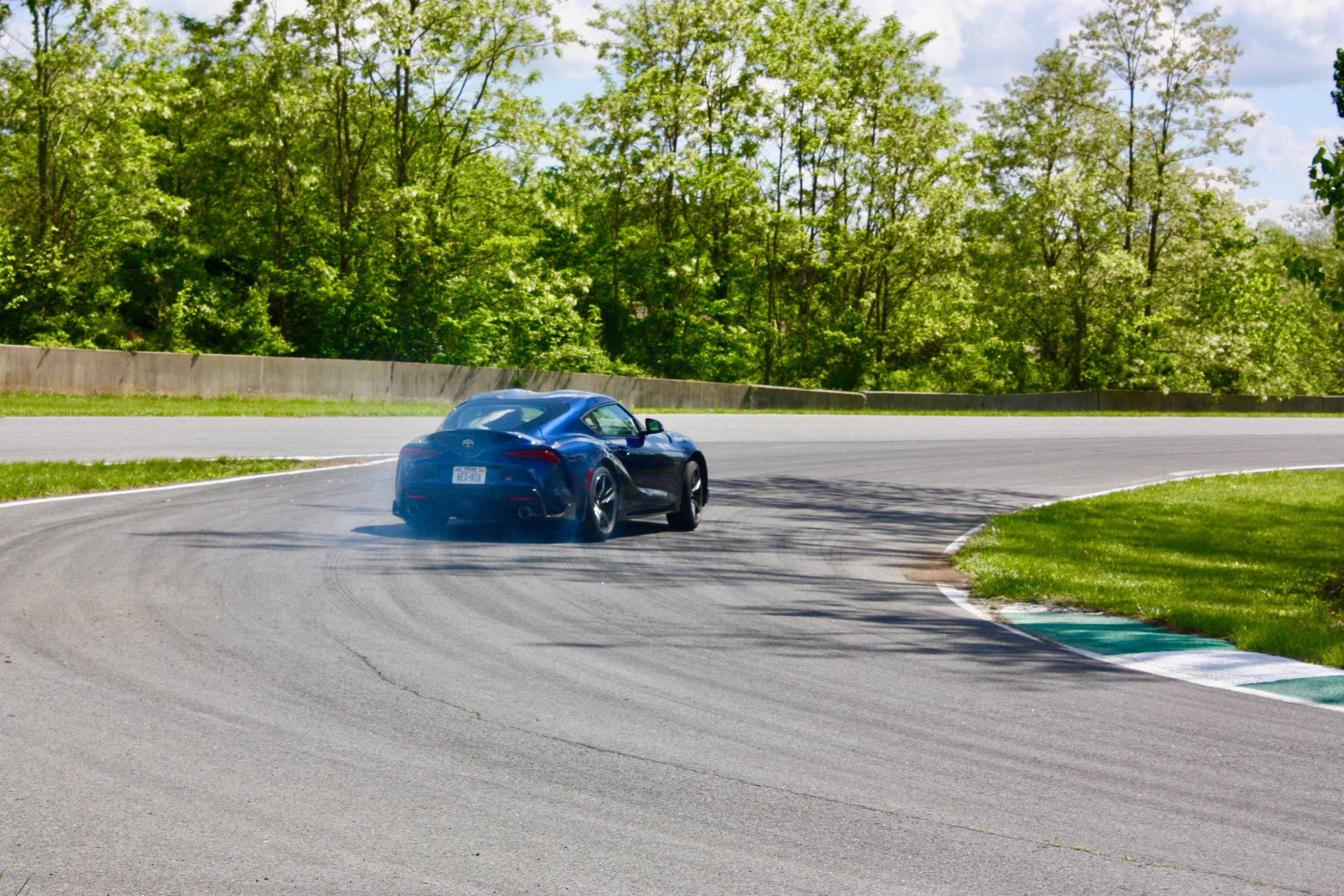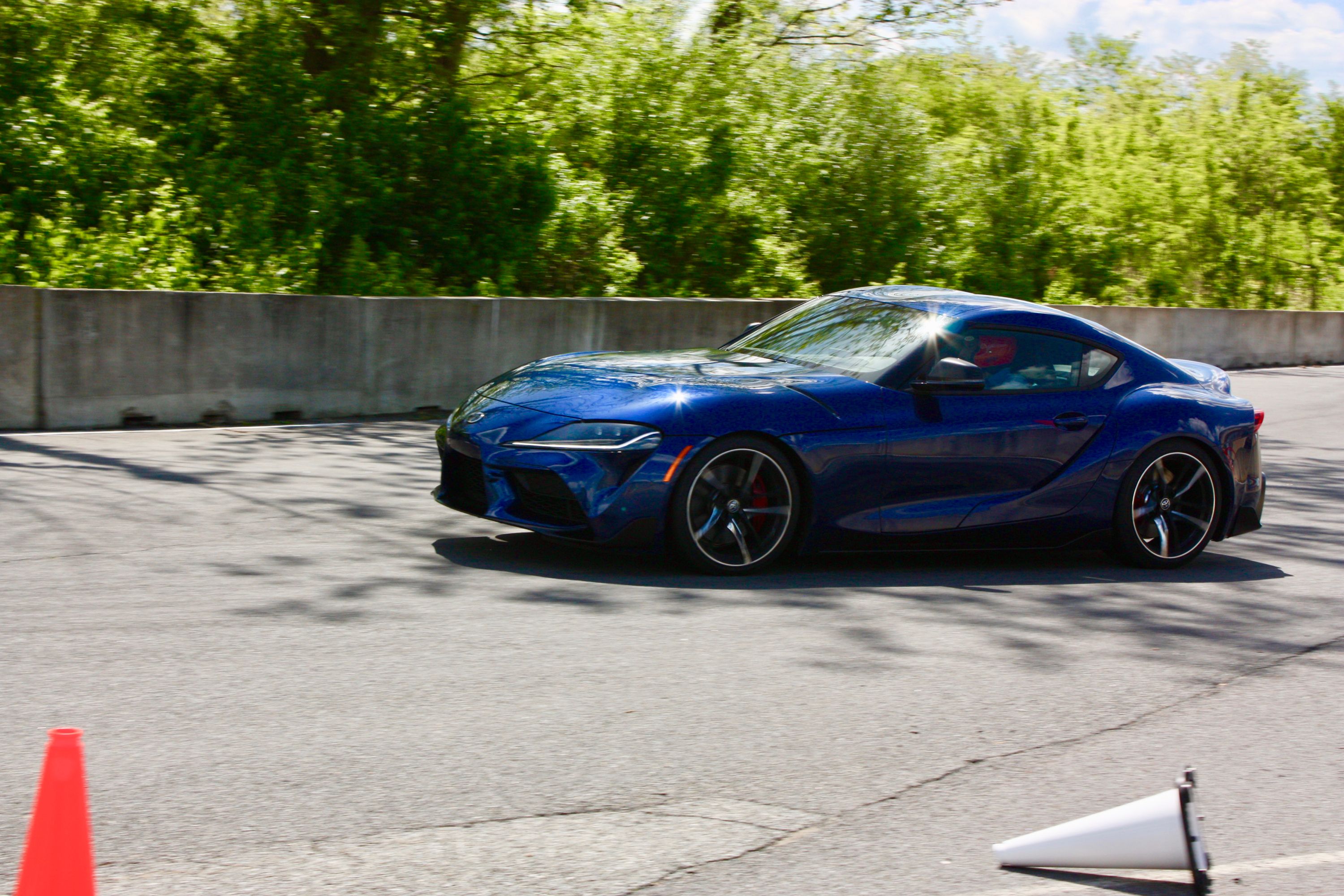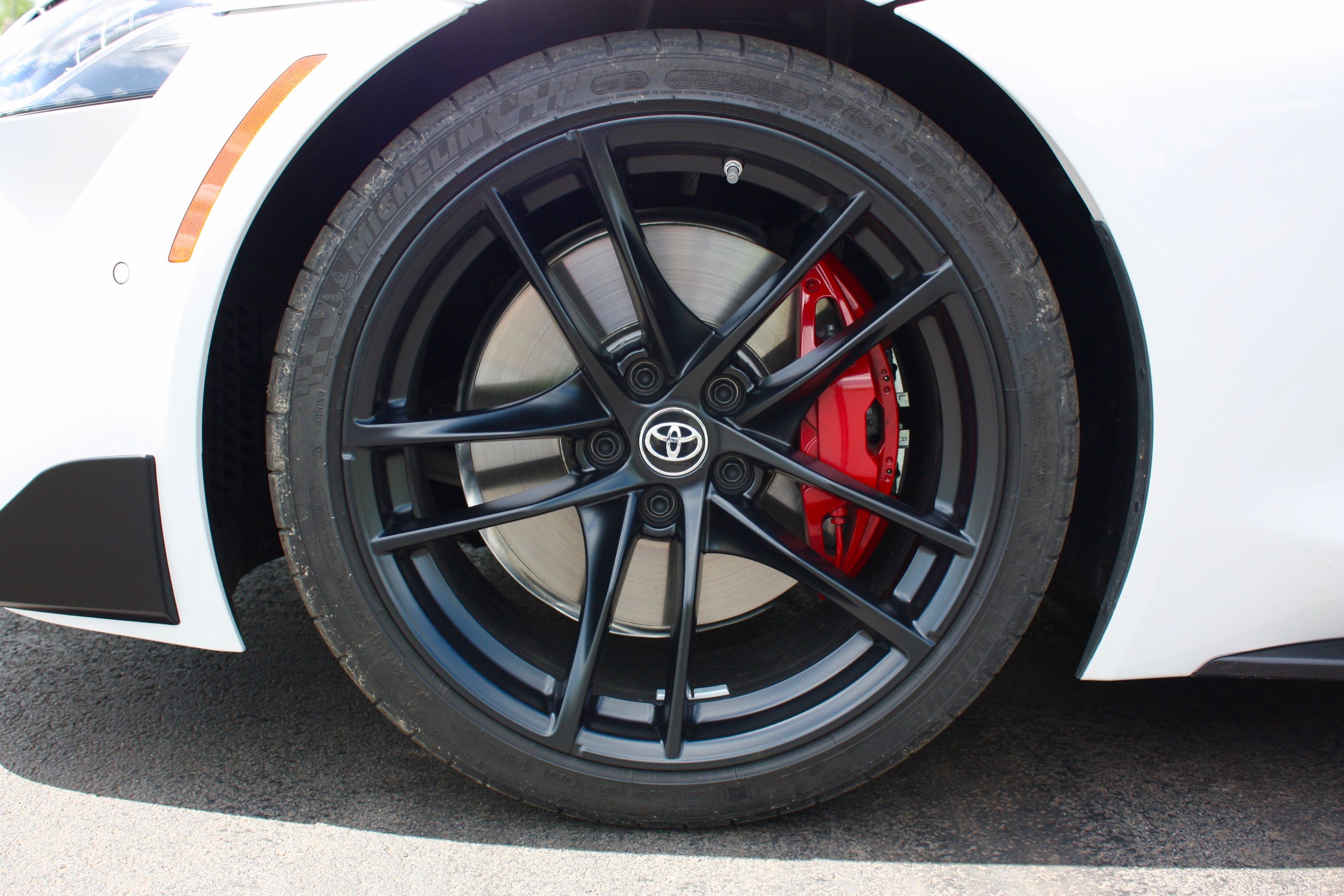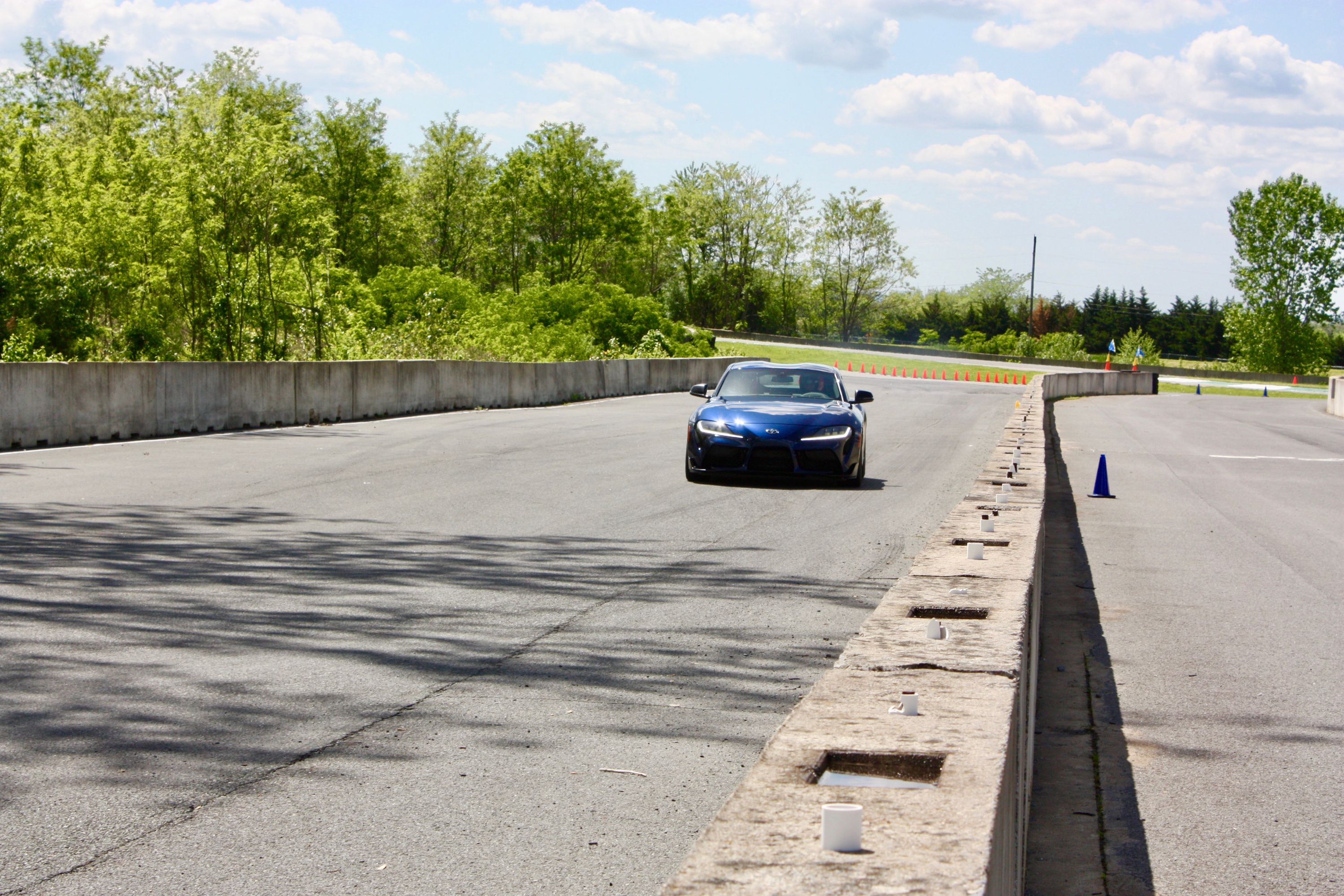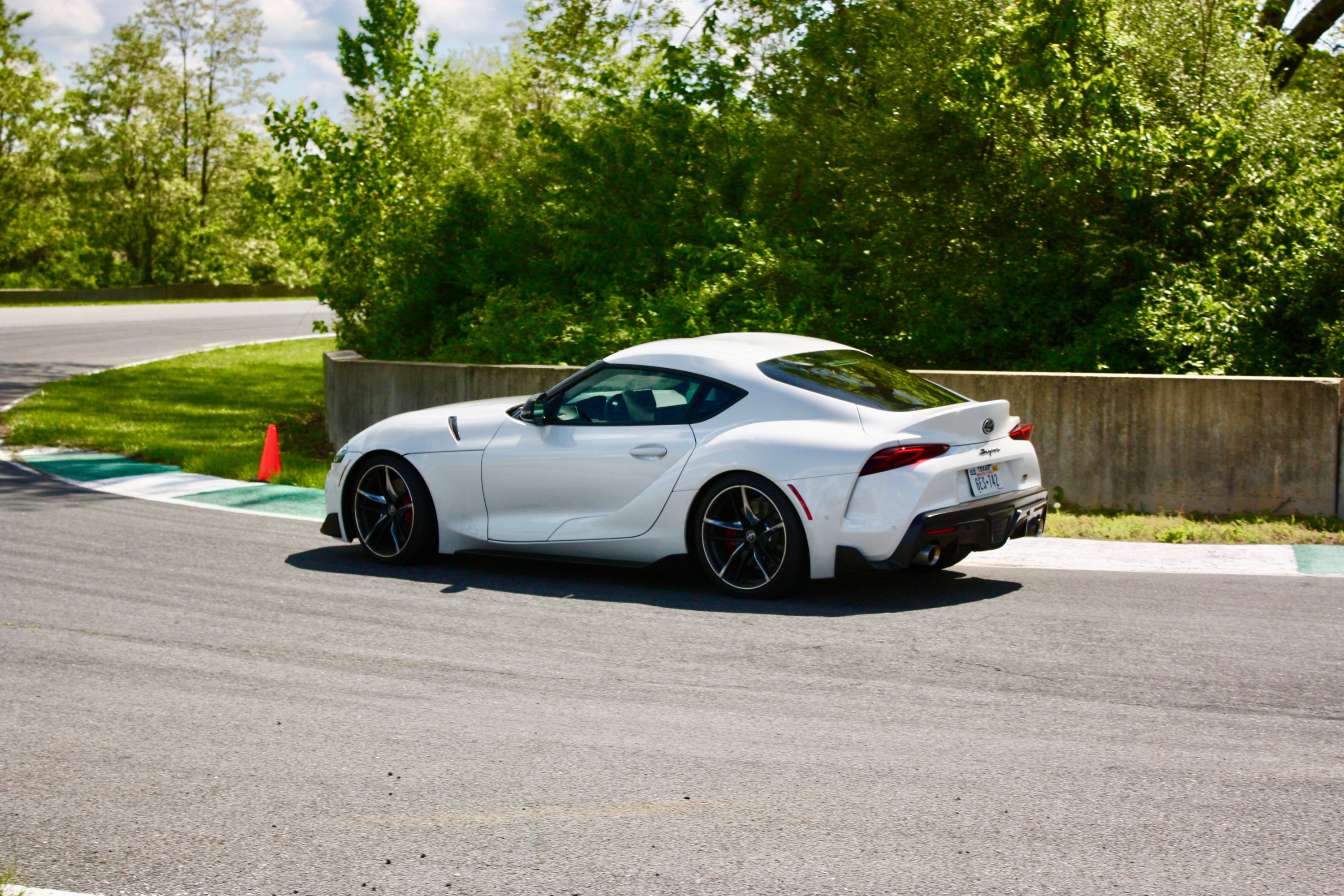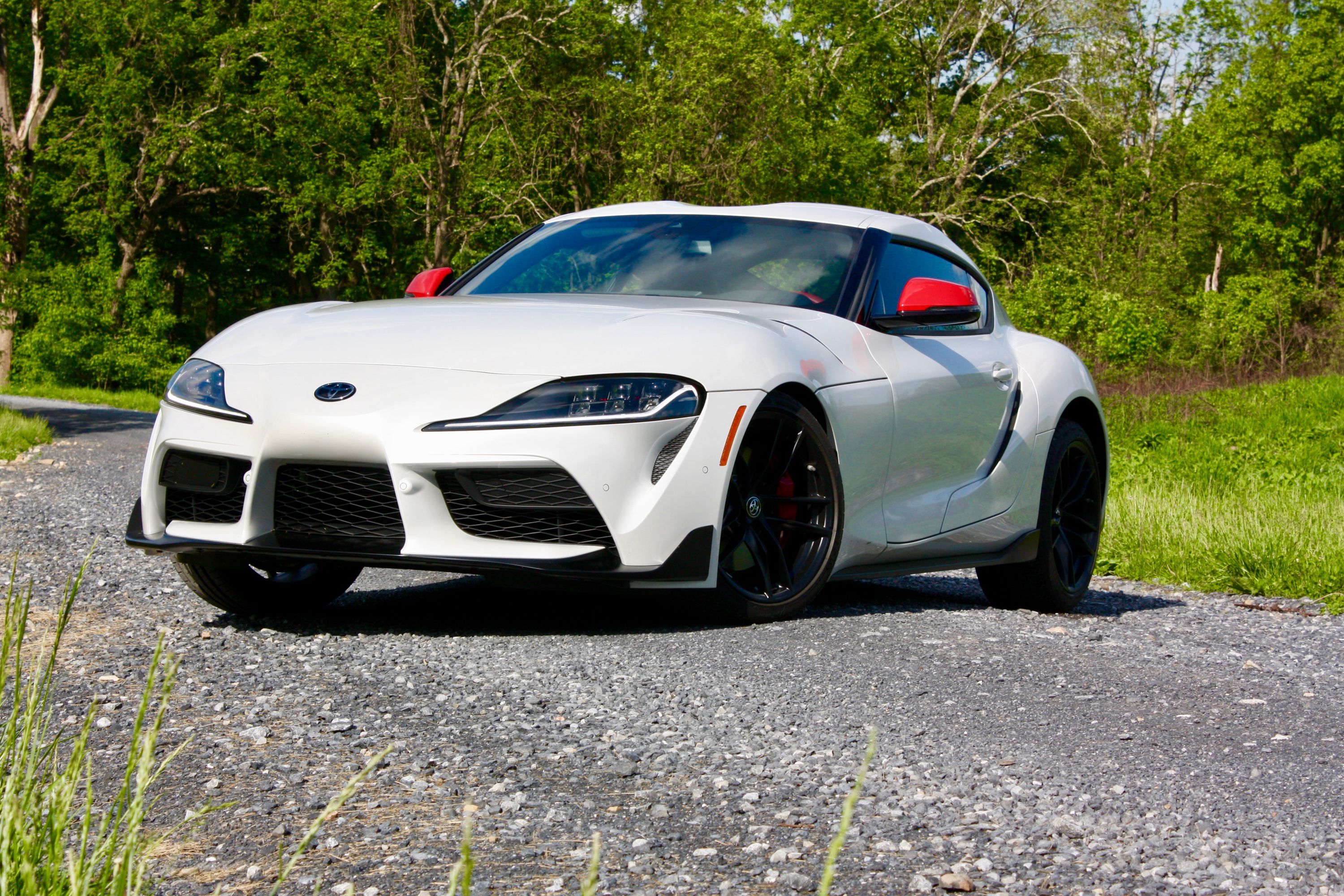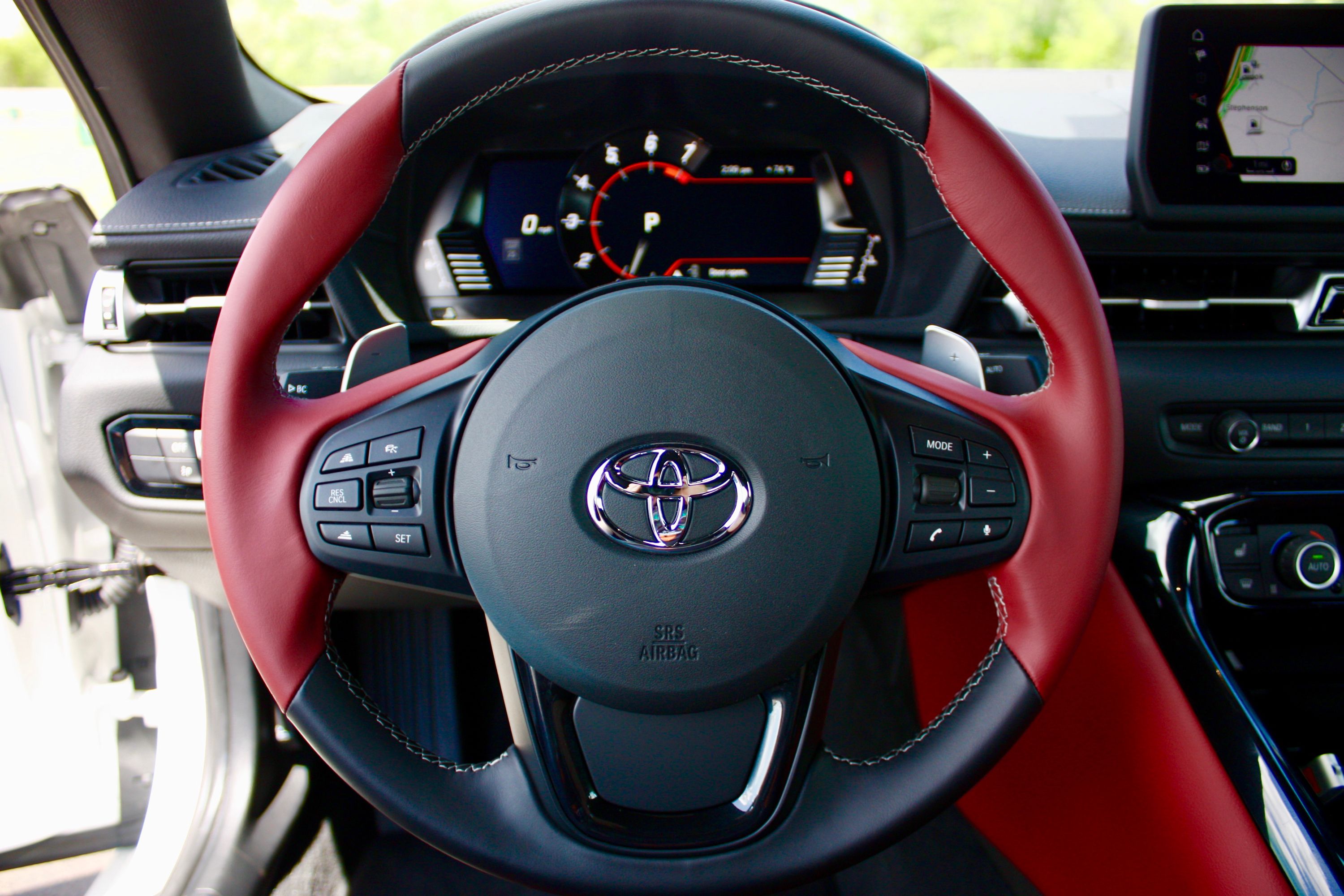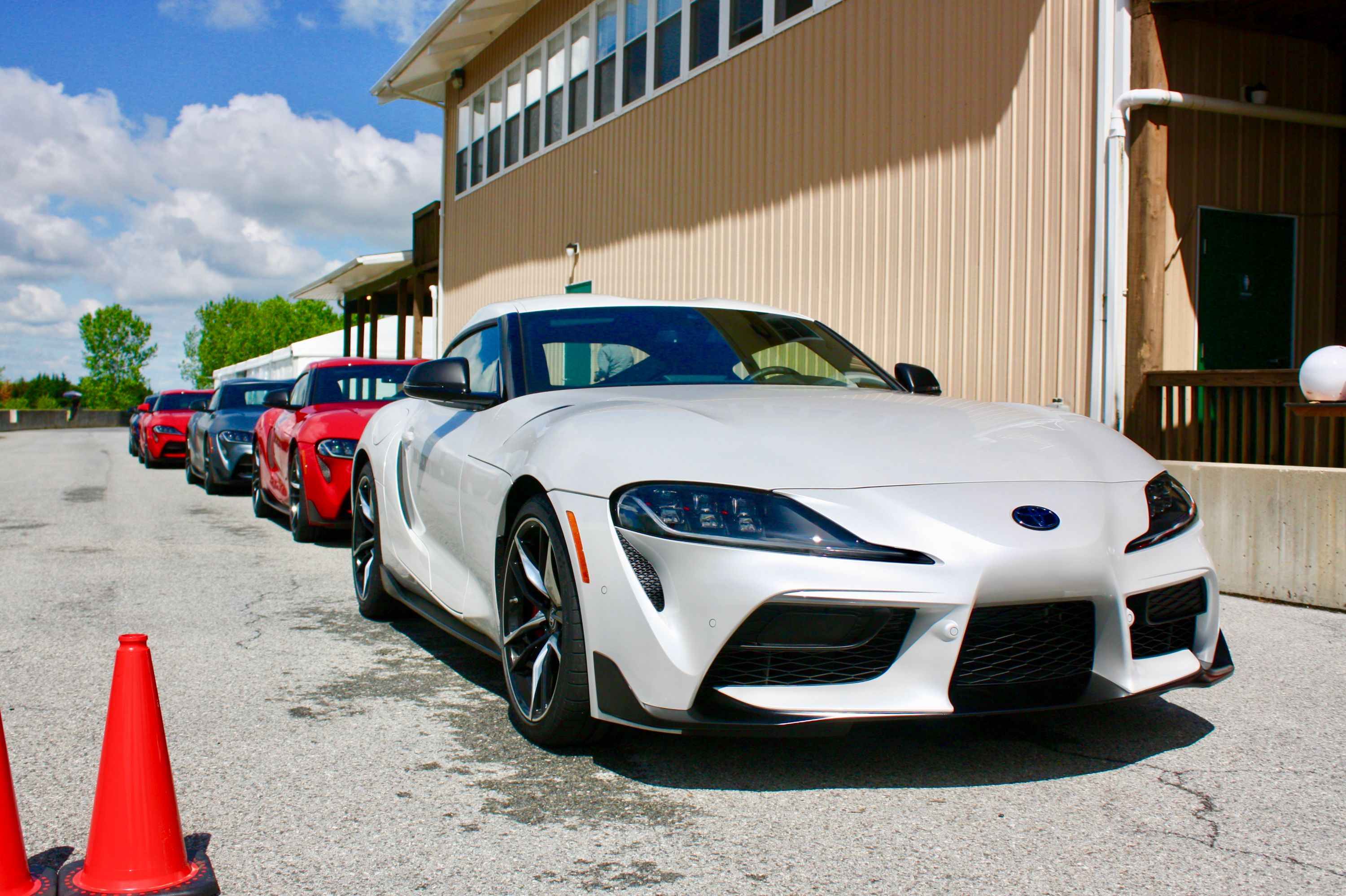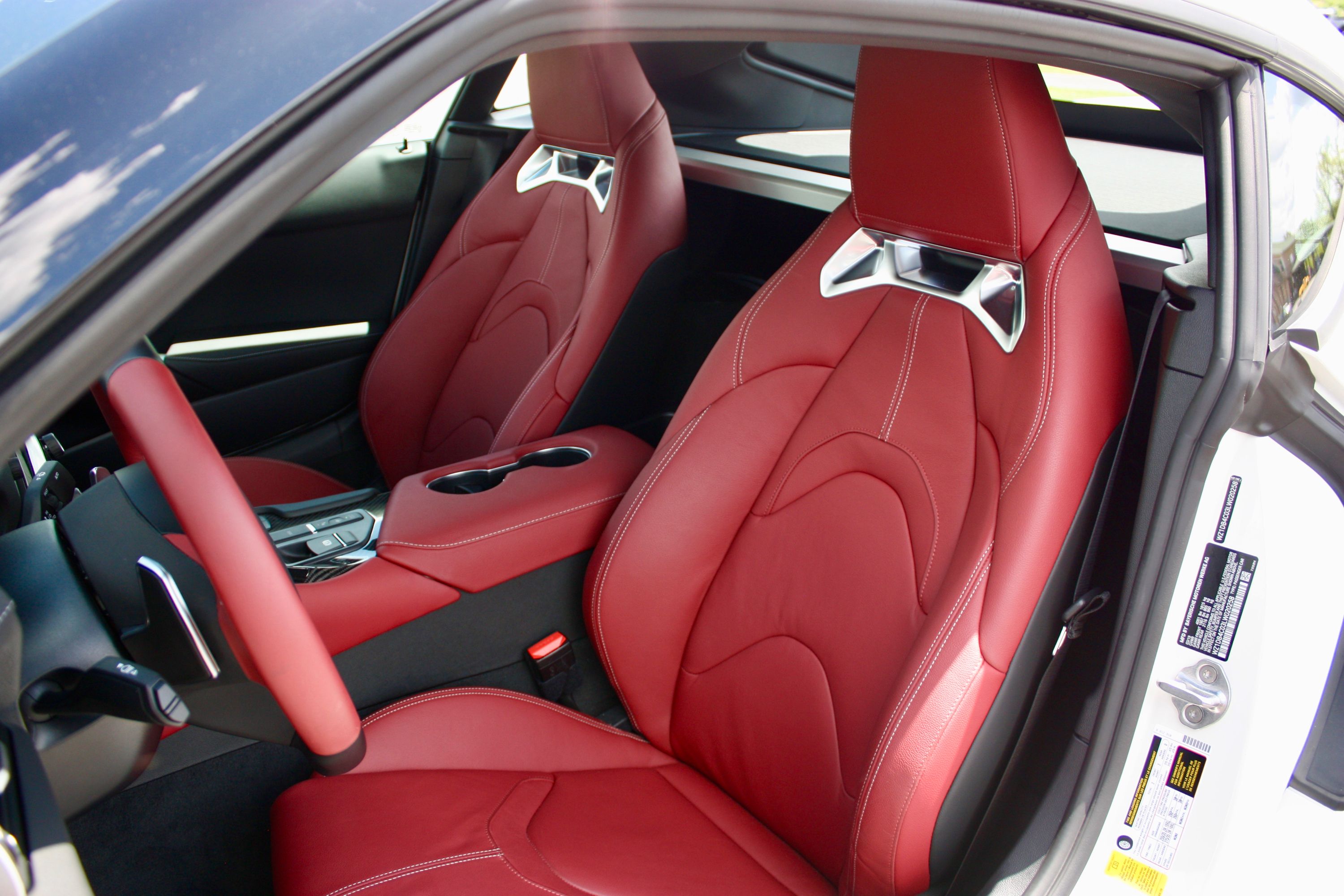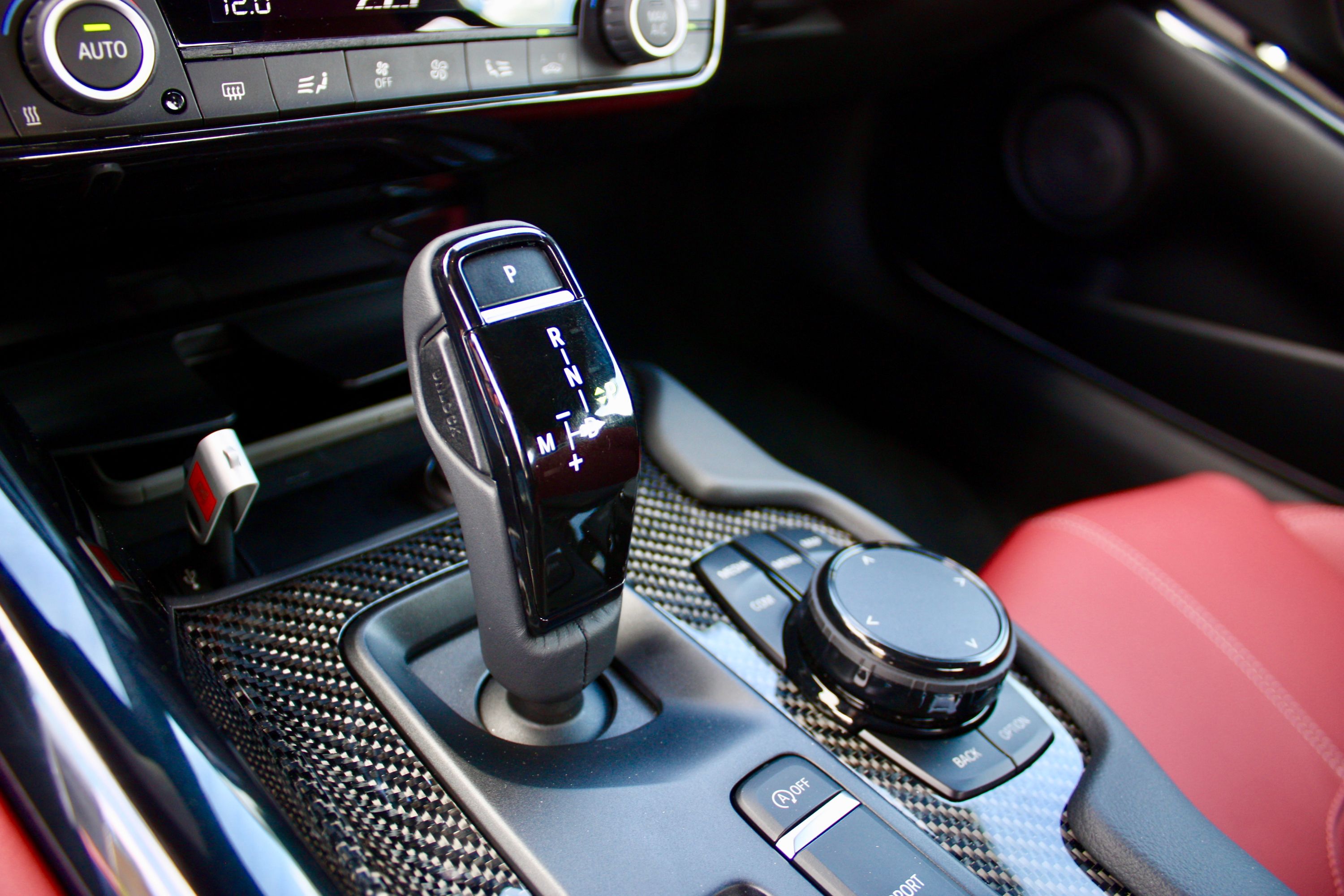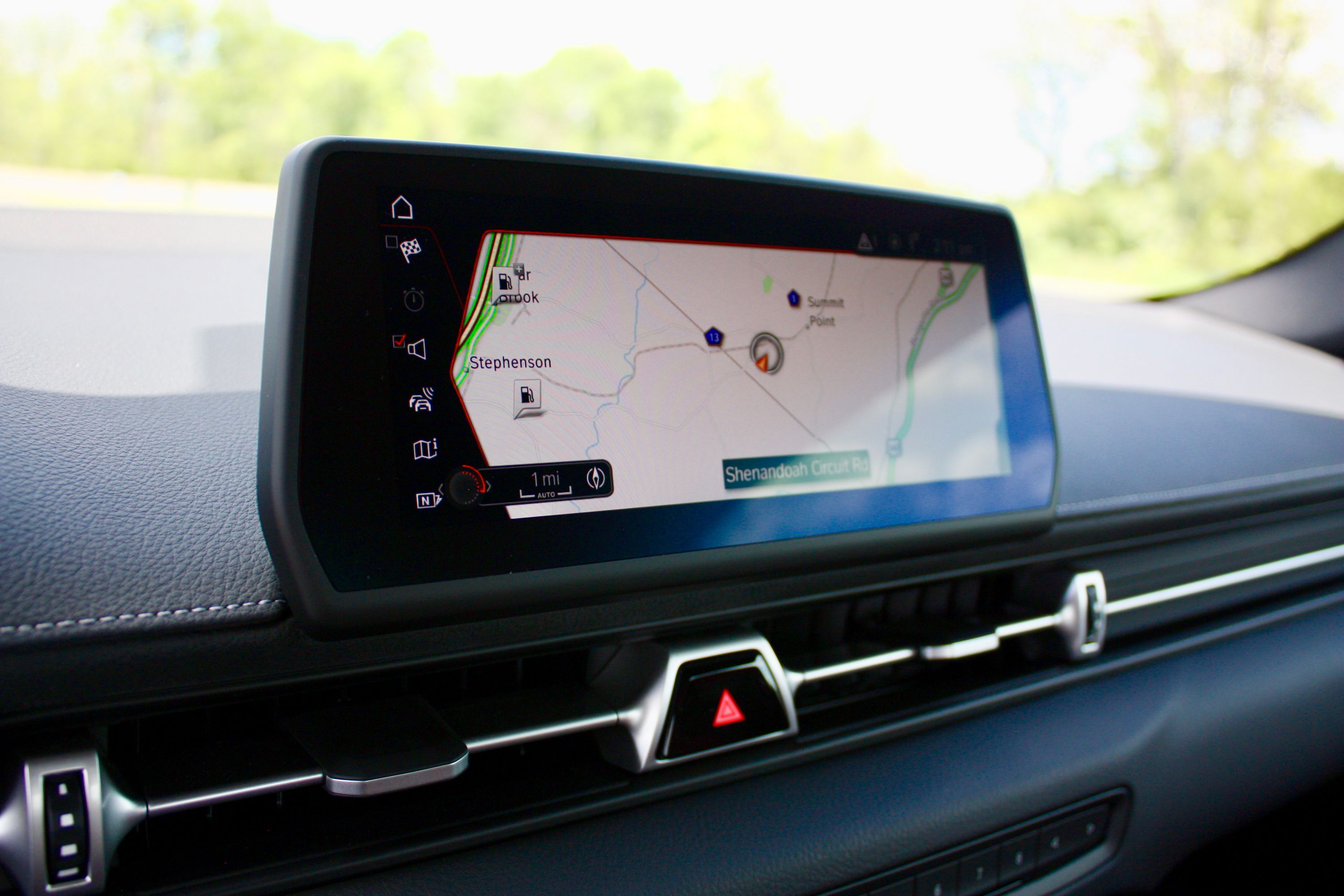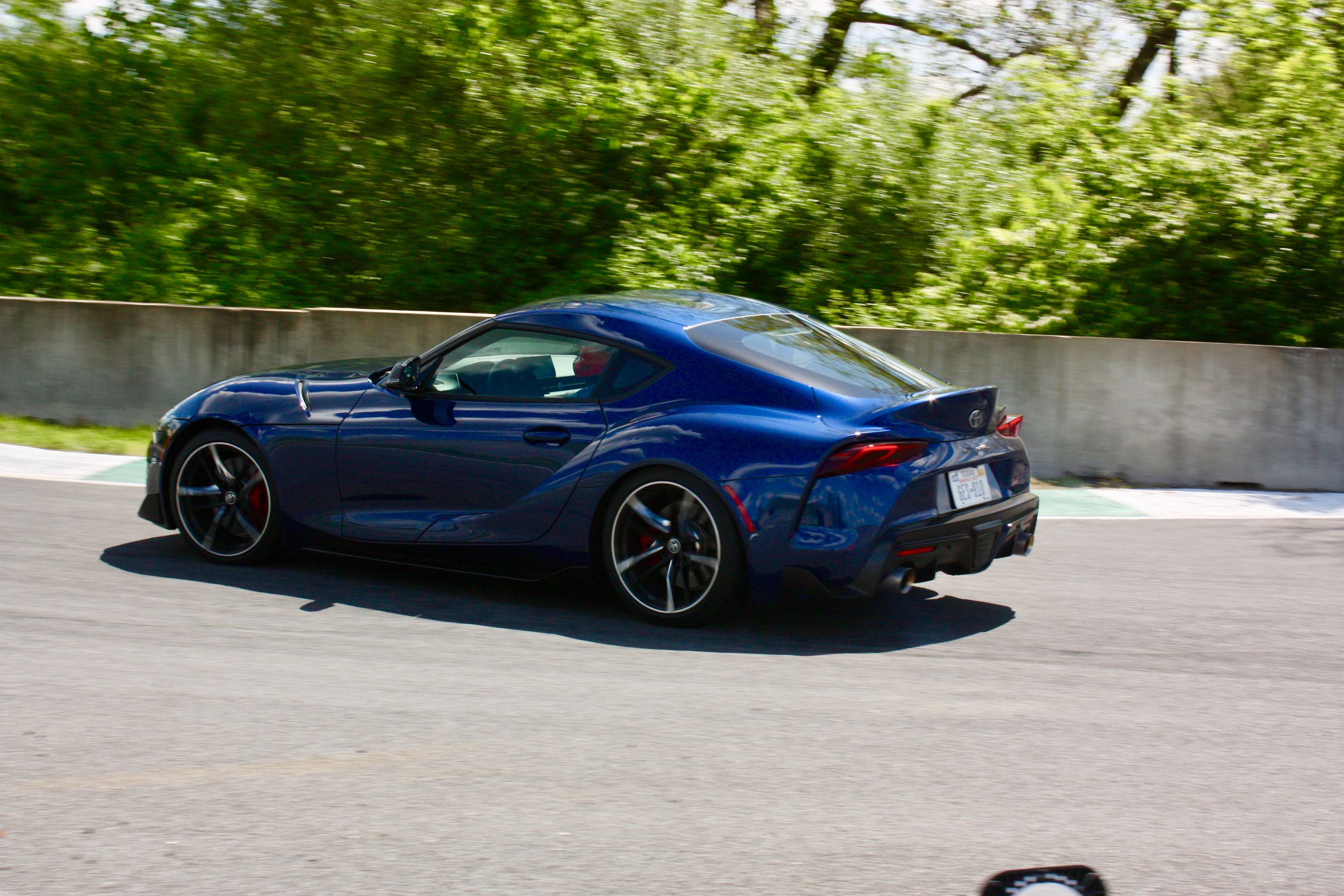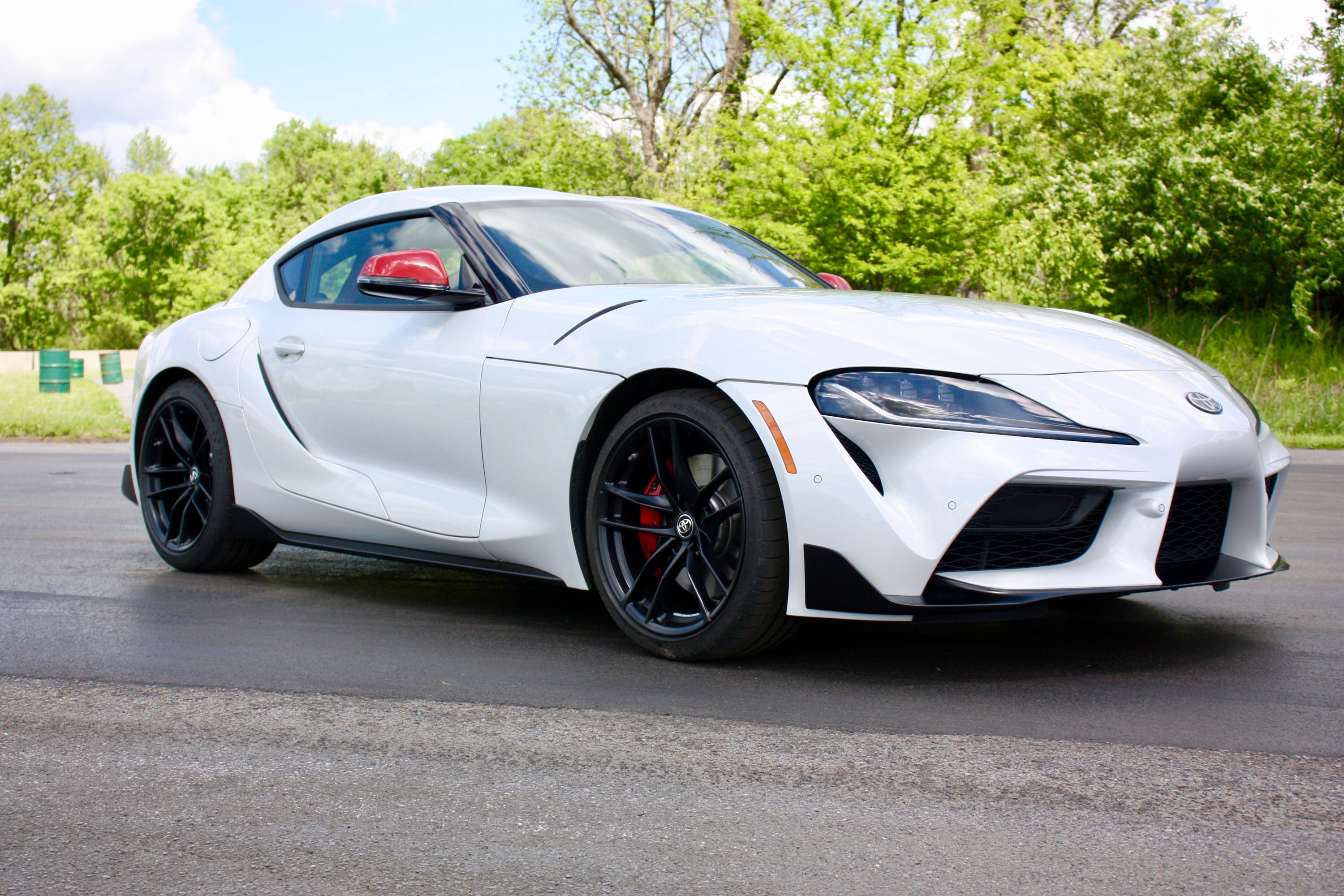There’s no shortage of hype and controversy when it comes to the 2020 Toyota Supra. The return of this iconic nameplate has divided enthusiasts and sparked a firestorm of opinions, with some heralding its return, and others deriding its Bavarian influences. But putting all that aside, the most important question remains unanswered - what’s it like to drive? To answer that, Toyota flew me out to Virginia, where I was given the opportunity to see what the A90 Supra can do on the track, and how it handles the street. This is what happened.
The 2020 Toyota Supra On The Track
Quick Info On The Track
To help demonstrate the A90 Supra’s on-track prowess, Toyota rented out the Summit Point Motorsports Park in West Virginia. The track layout was slightly abbreviated by cutting out the highly banked “Karussel” section, but the track was still technical and challenging, offering a variety of corners that incorporated both positive and negative camber, decreasing and increasing radii, and numerous elevation changes.
Many of the corners were also blind, and much of the track surface was quite bumpy.
All told, the track would provide an excellent opportunity to test the Supra’s handling and power delivery, and a quick time would require trust in the suspension and chassis.
The Experience Behind The Wheel
My driving experience with the 2020 Toyota Supra started with a quick on-track lead/follow session to help me get acquainted with the track layout, and I was immediately impressed by the Supra’s BMW-sourced B58 engine.
Under the hood, you’ll find a 3.0-liter inline six-cylinder boosted by a single twin-scroll turbocharger. Peak output is rated at 335 horsepower at 5,000 rpm and 365 pound-feet of torque at 1,600 rpm.
My first thought was that this is one “meaty” engine. The torque curve is nice and fat, hitting your backside at a very low rpm.
After three laps of lead/follow, Toyota opened the track for free lapping, so I grabbed the first available seat, configured all the proper electronic settings, and went for it.
With the Supra fully unleashed, the B58 engine impressed me even more. This thing is definitely not hurting for power. Sixty mph arrives in 4.1 seconds, making the A90 the quickest Toyota ever produced. Top speed is electronically limited at 155 mph, but without the nanny, we think 175 mph is within reason.
The only transmission option is an eight-speed automatic from ZF. This transmission is ubiquitous in the industry, and can be found in a wide variety of performance models, including the Alfa Romeo Giulia, Aston Martin DB11, Jaguar F-Type, Lamborghini Urus, and Maserati Quattroporte, among many, many others.
That said, I did occasionally hit the headlight stalk behind the steering wheel when going for the downshift paddle under heavy braking, flashing the headlights rather than grabbing a lower gear. That’s mostly a user error thing, though - with repeated laps, I got into a good rhythm with it.
And one more thing - while the 8HP is good, I still found myself wanting a manual transmission. Badly. This car deserves a manual transmission. Three pedals would provide an immediate connection to the drivetrain that you just can’t get with any slushbox, and for a car so laser-focused on driver enjoyment, this really is a head-scratching omission.
2020 Toyota Supra engine specifications
|
Engine |
turbocharged 3.0-liter inline six-cylinder |
|---|---|
|
Horsepower |
335 hp at 5,000 rpm |
|
Torque |
365 lb-ft at 1,600 rpm |
|
0-60 mph |
4.1 seconds |
|
Top Speed (electronically limited) |
155 mph |
|
Top Speed (no limiter) |
175 mph (est.) |
|
Transmission |
eight-speed automatic |
The eight-speed automatic feeds the rear wheels through an active electronic rear differential, which comes as standard equipment across the line. This unit distributes torque with locking that varies from 0 to 100 percent, and it provides loads of grip. On track, I could really feel it working to put down the power, scrambling across the bumpy surface as I laid into the throttle on exit.
The steering also felt quite good, with the electric variable ratio offering extra weight while in sport mode. The leather-wrapped three-spoke steering wheel was grippy and contoured nicely to my hands.
Hauling it down was a set of ventilated disc brakes matched to Brembo calipers, with four-pots in front and single-pots in the rear. Disc sizing measures in at a sizable 13.7 inches in front and 13.6 inches in the rear. Trail braking was a breeze, and despite repeated hard stops, fade was minimal.
The standard 19-inch forged aluminum wheels are measured at 9-inches wide in front and 10-inches wide in the rear, while tire sizing is set at 255/35R19 in front and 275/35R19 in the rear. Providing the stick is Michelin’s Pilot Super Sport compound, which is standard rubber for numerous sports cars these days. You can find Pilot Super Sports on everything from Ferraris to Porsches, and yes, on BMWs as well.
2020 Toyota Supra Suspension And Drivetrain
|
Differential: |
active electronic rear differential |
|---|---|
|
Suspension: |
double-joint type MacPherson strut in front, multi-link setup five-arm in rear |
|
Dampers: |
adaptive |
|
Steering: |
electric, variable ratio |
|
Brakes: |
ventilated discs, Brembo four-pot calipers with 13.7-inch discs in front, single-pot calipers with 13.6-inch discs in rear |
|
Tires: |
Michelin Pilot Super Sport, 255/35R19 in front, 275/35R19 in rear |
As I wrote previously, the 2020 Toyota Supra is surprisingly small in person. The wheelbase is just 97.2 inches in length, which is a full 4 inches shorter than the diminutive Toyota 86.
However, to achieve an ideal wheelbase-to-track width ratio (as determined by Toyota’s extensive history in motorsport), the Supra is also quite wide, stretching 62.8 inches and 62.6 inches front and rear, respectively. That’s an extra 3 inches and 2 inches compared to the 86’s track width, respectively.
It’s interesting that the rear track is slightly narrower than the front. Usually, it’s the other way around.
Further handling enhancements are found under the skin, where the Supra offers a platform that’s several times more rigid than that of the 86. It’s obvious that torsional rigidity was a major focus for the development team - the ultra-wide side sills are testament to that, as is the way in which the suspension works to keep the thing glued to the road.
The 2020 Toyota Supra tips that scales at just under 3,400 pounds, or 3,397 pounds to be exact. The center of gravity is also lower than that of the 86. While 3,400 pounds is towards the lighter end of the spectrum for sports cars these days, the Supra actually manages to feel even lighter than its spec sheet would suggest.
2020 Toyota supra vs competition - exterior dimensions
|
Wheelbase: |
97.2 inches |
97.4 inches |
106.7 inches |
|---|---|---|---|
|
Overall Length: |
172.5 inches |
173 inches |
180 inches |
|
Overall Width: |
73 inches |
71 inches |
77 inches |
|
Overall Height: |
50.9 inches |
51 inches |
49 inches |
|
Track Width (front): |
62.8 inches |
60.1 inches |
63.6 inches |
|
Track Width (rear): |
62.6 inches |
60.6 inches |
62.5 inches |
Inside the cabin, I found the highly bolstered sport seats to be very supportive of my on-track shenanigans. The optional heads-up display was also useful for providing quick info on the fly, while the giant tachometer in the middle of the 8.8-inch color LCD gauge cluster was crisp and clear. The active exhaust system sounded great in sport mode, crackling and popping whenever I eased off the throttle.
Finally, it has to be mentioned that Toyota will include a membership to the National Auto Sport Association (NASA) with the purchase of a new Supra. We think that’s a fantastic thing to do, and we wish more manufacturers would consider something similar with their respective sports cars. Because anyone who doesn’t put the Supra on a racetrack is missing out on a lot of what this car has to offer, and NASA is a surefire way to get that experience.
The 2020 Toyota Supra On The Street
Where I Drove It
After countless laps at the Summit Point Motorsports Park under my belt, it was time to drive the 2020 Toyota Supra back to the hotel. The drive took about an hour to complete, and consisted of both winding country two-lanes and some time on the highway as well.
The Experience Behind The Wheel
Out on the road, the 2020 Toyota Supra’s six-cylinder engine provides plenty of low-end torque for passing. Just dig into the throttle, and whatever is in front of you will quickly disappear into your rearview mirror.
And like I said before, this engine sounds great. It’s deep and sonorous, whirring high into the rpm range with a straight-six sound that’ll have you stabbing the throttle just for the hell of it. Put it in sports mode, and a flap opens up to make it even louder. Snap off the go pedal, and it’ll backfire in rapid succession with the staccato punctuation of a machine gun.
Sure, all the popping and banging is a bit juvenile on the street, but you don’t have to push the button. That said, I know anyone reading this right now definitely will be pushing that button.
The same goes for the seats. The tight bolsters worked wonders on the track, but could occasionally feel a little confined on the street. Still, I found the balance between support and comfort to be about right for the segment.
The low seating position could occasionally make visibility a little difficult, but compared to rivals like the Chevy Corvette, I’d rate visibility as above average. The rear backup camera helped while reversing, and I never had difficulty maneuvering in tight spaces. I also liked how the Supra’s ultra-wide rear hips were clearly visible in the sideview mirrors.
I also didn’t like some of the driver assists, especially the lane-keep system, which I found to be pretty intrusive at times. Luckily, these can be turned off, if desired.
I have to level one final critique at the infotainment system, which was difficult to navigate and a bit finicky. Luckily, the multi-information screen behind the wheel and the touchscreen on the dash provided clear readouts, which made navigating the convoluted menus a bit less strenuous. What’s more, Toyota is finally offering Apple CarPlay, and although I had difficulty connecting it to my ancient 5c iPhone, newer devices should have no problem.
Final Thoughts
On the street, the Supra is well-behaved, soaking up bumps without killing your backside. While I wouldn’t necessarily want to spend more than three or four hours driving it without a break, it’s still surprisingly comfortable for a performance-focused sports car.
While the Porsche 718 Cayman offers laser-sharp mid-engine rotation and the Chevrolet Corvette provides heavy artillery-style performance, I’d take the Supra over both. It really is that good.
Further Reading
Read our full driven review on the 2020 Toyota Supra.
Read our review of the 2020 Toyota Supra
How Much BMW DNA Can Be Found In The 2020 Toyota Supra?
14 Little-Know Facts About The 2020 Toyota Supra A90

